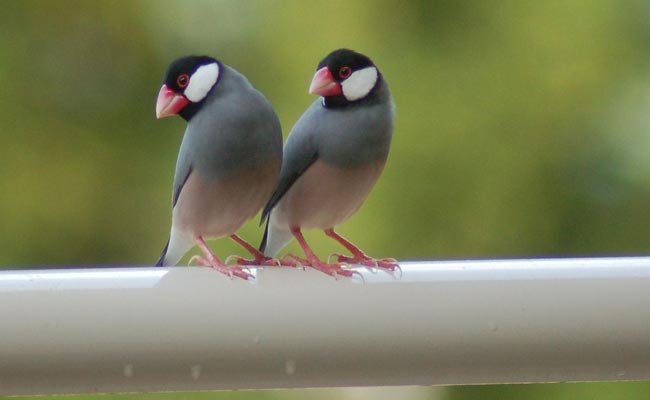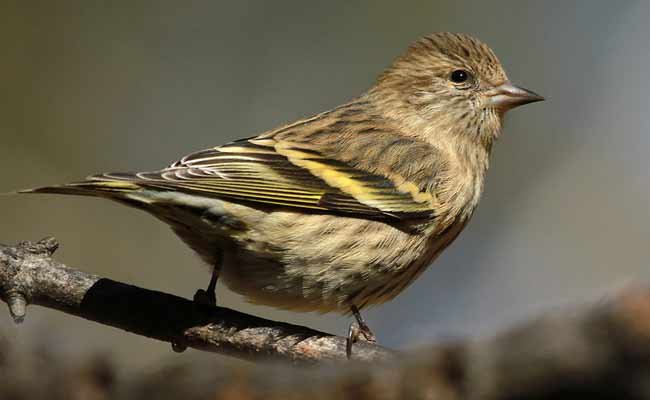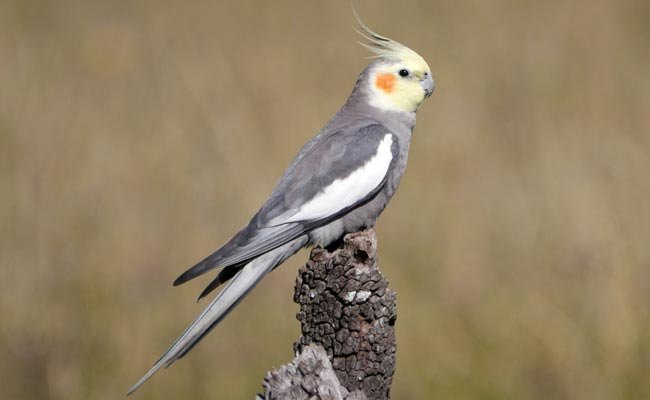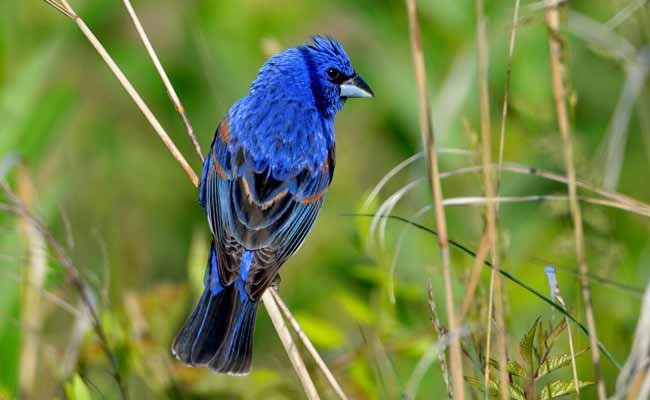
Java Finch Breeding, Care, Habitat, Price, And Personality
March 3, 2021
Pine Siskin Song, Call, Diet, Habitat, And Personality
March 7, 2021Cockatiel Facts, Care, Food, Habitat, And Personality. Hey friends, how are you all? Today I will share with you all the details about the Cockatiel Diet, Facts, Care, Habitat, And Personality. This beautiful bird is one of the most popular companion birds. They are very intelligent and friendly. In Australia, cockatiels are also known as weiro birds or quarrion. So without wasting time, let’s get started with today’s topic.
Cockatiel Facts, Care, Food, Habitat, And Personality.

General Information.
Common Names: Cockatiel, Tiel, Quarrion or Quarrian, Weiro or Weero,
Scientific Name: Nymphicus Hollandicus
Adult Size: 12 To 13 Inches,
Weight: 2 To 4 Ounces
Lifespan: 15 To 20 Years With Proper Care.
Family: Cockatoos(Cockatiel is the smallest cockatoo in the family)
Species: N. hollandicus
Types Of Cockatiels.
These beautiful birds are available in many different colors and mutations. But some of them are very popular as pets like wild or gray cockatiels, Albino cockatiels, Lutino cockatiels, Cinnamon cockatiels, fawn cockatiels, Isabelle cockatiels, Pied cockatiels, Silver cockatiels, and Whiteface cockatiels.
Behavior.
Cockatiel behavior is very friendly, gentle, affectionate, and sociable. In the wild, they live in large flocks. These large flocks of cockatiels fly from one place to another in search of food and fresh water. They are very intelligent and very fast learners in doing various tricks. The Cockatiel is the No. 1 pet bird in America because this beautiful bird is Cuddly, outgoing, and comical. They simply want your attention and will be very happy to see you. These beautiful birds can learn many tricks if you train them properly.
Habitat.
The Cockatiels habitat in open woodlands and savannas. They always inhabit near the source of freshwater because of Australia’s temperature. This beautiful bird is native to Australia. The Cockatiel was discovered by James Cook in 1770, but they became very popular as pets in the 1900s. These pet birds are easy to breed in captivity. In the wild, they prefer large eucalyptus trees, on which they make their nest and stay in the night.
Cockatiel Diet.
In the wild, Cockatiel food is seeds, fruits, berries, and vegetation. Cockatiels love to eat a variety of foods, pelleted food, including commercial birdseed, vegetables, and fruits in captivity. Provide them always a proper diet in which you should give them 75% pellet foods and 25% seeds, and only 20% of greens and veggies. In fruits, you can offer them berries, melon, papaya, and kiwi. You can also offer them hard-boiled eggs, legumes, and Sprouted seeds. As a treat, you can give them a honey stick or millet spray once a month. Never feed your cockatiel parrot chocolate, coffee, avocados, and salt; these food items are toxic for your bird.
Cockatiel Care.
If you are a cockatiel pet owner, spend a significant amount of time with your pet bird daily. Always keep them in pairs because these beautiful birds are social and love to be petted in pairs. If you keep a single bird, then they get bored and stressed when you are not around. Provide them with a high-quality pellet diet and clean their cages routine basis. Provide them fresh water for drinking and wash their food dishes before providing them with any food. Spray your pet bird with fresh water once a week. Cockatiel cage size must be 20 inches wide and 26 inches tall or even large. Their cage must have enough space to place a few perches and toys. Clip your Cockatiel’s nails and wings twice a year. Before you clip cockatiel wings or nails, you must learn how to do it. If you do it the wrong way, your pet bird can bleed to death. The best solution is to visit a veterinarian for this purpose.
Health Problems.
The common health issues of cockatiels are fatty liver disease and nutritional deficiency. They only eat seeds which causes nutritional deficiency because they do not get enough vitamins and minerals. To prevent this health issue, give them fruits, vegetables, and pellet food. Fatty liver disease caused by high-energy food full of carbohydrates and fat. To prevent this disease, give them a proper diet and always wash fruits and vegetables before providing them. Cockatiels are susceptible to respiratory and psittacosis diseases, which is a bacterial infection. The symptoms of this disease are wheezing, coughing, sneezing, and nasal discharge. If you see any signs, take your bird to a veterinarian as soon as possible because it can save your bird’s life.
Nesting And Breeding.
In the wild, cockatiels breeding season is Spring to Early Autumn. These beautiful birds are Monogamous, which means they mate for life. Males sing songs and show their beautiful feathers to impress females. When they find their mate, both male and female make their nest in tree hollows, especially in eucalyptus trees. After that, the female Cockatiel lays 4 to 7 eggs, only one egg per day. Both mates incubate the eggs for the next 17 to 23 days. Both parents feed their babies for the next 4 to 5 weeks; after that, baby cockatiels can be independent and leave their nest.
Clutch size: 4 To 7 Eggs
Incubation period: 17 To 23 Days
Nestling period: 4 To 5 Weeks
Breeding season: Spring to Early Autumn
Breeding age: the ideal age for a male is 18 months, and for females 2 years
Cockatiel Colors And Markings.
The wild cockatiel birds have gray bodies with a yellow crest and a face with orange patches on their cheeks. Both males and females have the same coloration, but the male face color is brighter than the females. One more difference is that females have bars underside of the tail feathers. In captivity, these beautiful birds can be found in several color mutations. The most common variations are mentioned below.
- Albino: Lack of feather coloration and the whole body is white without any markings.
- Lutino: They have red eyes, orange cheeks, a White body with a yellow face and crest, orange cheeks, and red eyes
- Pied: They are similar to wild cockatiel colors but with more yellow and off-white color feathers on their body.
- Cinnamon, fawn, and Isabelle: They mostly have feathers with warm tan or brown color feathers.
- Recessive silver: They have incredible red eyes and gray feathers.
- Dominant silver cockatiel: They have warmer gray tone feathers with dark eyes.
There are many other color mutations available in the bird market. Sometimes it’s complicated to distinguish between males and females; therefore, the way to tell apart them is DNA testing.
Speech And Sounds.
Cockatiels have a beautiful and mesmerizing voice. They can vocalize and whistle but not like other parrots. These beautiful parrots are good at mimicry, and they can mimic household sounds like doorbells—phones, alarm clocks, and sometimes even wild birds. Males are better than females in mimicking speech and whistles. In the breeding season, males cockatiel sounds Really amazing when they sing to attract females.
Facts.
In the end, here are some fantastic and wonderful cockatiel facts.
- Cockatiels are very friendly and sociable, and therefore in the wild, they live in flocks.
- The Cockatiel was first discovered by James Cook in 1770s Australia.
- Male Cockatiel talking and whistling ability is better than the female cockatiels. In the wild, the males use sounds to attract females, especially in the breeding season.
- Cockatiel is the No. 1 pet bird in America because this beautiful bird is Cuddly, outgoing, and comical.
- Cockatiels are considered the most widely kept parrots.
- They are the smallest species of cockatoos.
- The cockatiel life span can be up to 20 years with proper care, nutrition, and the environment.
- Always buy cockatiels in pairs because they are sociable birds and get stressed and bored if you leave them alone.
- They sleep 14 hours a day.
- Cockatiels are more amazing at whistling than talking; even some talented cockatiels can whistle the entire song.
Final Words.
So, friends, we hope you enjoy our article Cockatiel Facts, Care, Food, Habitat, And Personality. Please give us your feedback in the comments.

